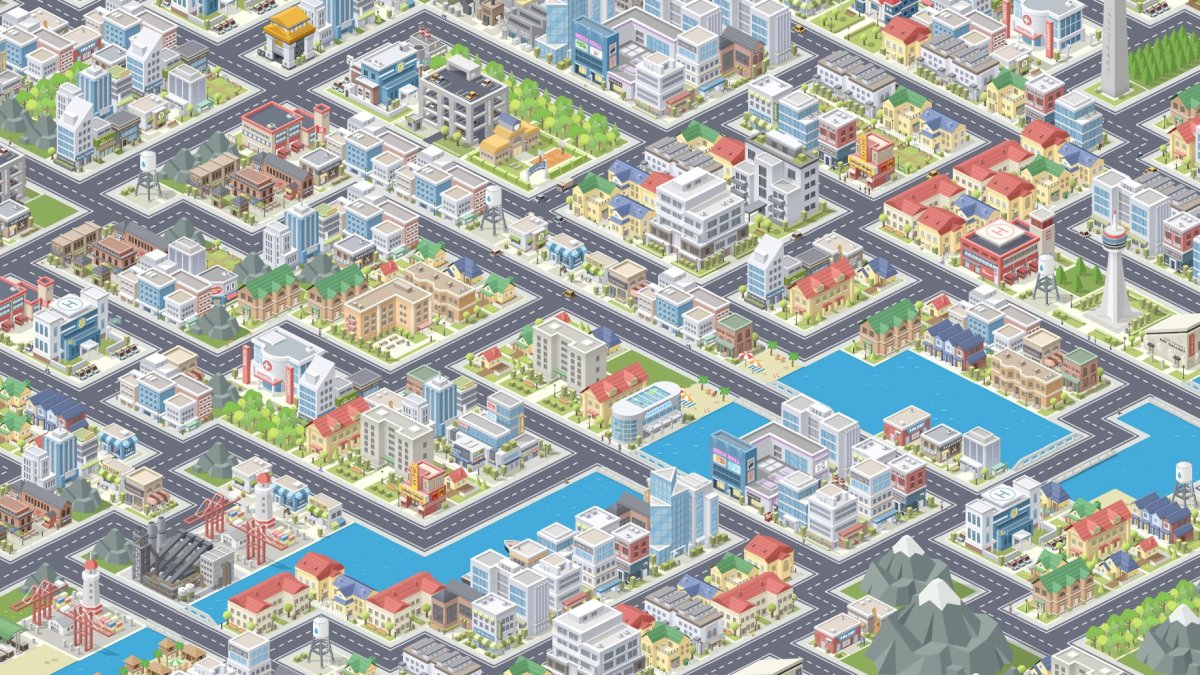Is that a major metropolitan area in your pocket or are you just happy to see me?
In the early years of the app store, back before freemium titles starting raking in millions through microtransactions, EA released a decent if feature-poor version of Sim City 3000 simply titled Sim City for iPhone. If you go in the app store right now, you won’t find it. EA removed it several years ago, replacing it with Sim City Buildit, a free-to-play replacement with enough timers to drive even the most serious city planner to leave town.
The App Store on the iPad is actually a hotbed of fantastic little simulators, be it titles “inspired” by other hit games, like GameDev Tycoon or Project Highrise, or outstanding ports of ’90s hits like Transport Tycoon and Roller Coaster Tycoon Classic. What’s been missing, at least from my searches, is a decent city builder. Until now.

Pocket City (Android, iOS [reviewed on a 2018 iPad])
Developer: Codebrew Games
Publisher: Codebrew Games
Released: July 31, 2018
MSRP: $4.99
Pocket City is Sim City simplified. The objective is obvious: build a city. I start with a little bit of cash, lay down some zones and roads, and within a few hours, I have a massive metropolis with an oddly low population. The game shares a few features from the original Sim City and Sim City 2000. There are just three types of zones to build — residential, commercial, industrial — as well as various buildings I can use to improve my city’s finances, congestion issues, and population. Zones are built square-by-square but I can hold and drag my finger across the touch screen to make as many as I can afford at once. The touch controls here are quite good and there’s never an issue where I build something I’m not supposed to.
Keeping my city up and running is a snap. As I said, this is Sim City simplified, so some of the mechanics from that series are absent here. There is no elevation manipulation, no powerlines to worry about, no pipes for water and sewer. Instead, everything operates by way of roads. I just need to build power plants and water towers along the roads I lay down. Then, as long as a building is within two spaces of a roadway, it’ll have access to these resources. With the exception of trees I can lay down to improve my environment, everything requires power, water, and roadway access. So if I want to build a park in the middle of a massive housing project, forget about it.
As I advance my city further, I unlock new facilities I can construct to improve aspects such as safety, recreation, transportation, and health. I can adjust my taxes to greatly increase revenue at the cost of a mass exodus from my burg, or I can lower them to lure more people in. Managing my city well helps me complete the dozen or so quests my residents give to me. Some simply task me with improving an facet of my city, while others force me to take a closer look at what I’ve built, to help spot a gang hideout or find a clowder of cats.
Pocket City is quite good for what it is, but holding it back from being a phenomenal app is a lack of longevity. There is just one campaign, as well as a free build sandbox option. The campaign can be played on multiple difficulty levels, which I don’t find out about until I’ve grown tired of working on my first city. It’s easy to fall under this game’s spell during that first run because the difficulty is set to casual and I’m flush with cash. Hard isn’t actually hard — just more expensive — while Expert is the only time I need to take a loan from a bank and restrict myself from laying down plots willy-nilly.
The map is also very small. I fill it to capacity well before I raise my city to level 50. At level 70, I’ve pretty much run out of quests to raise my XP, so I settle for demolishing and rebuilding parts of my city. I tear down an apartment complex just to build another in its place. There are also disasters that happen randomly or at my command. Survival of these events will shower me with experience points, but any damage they do I can fix with the press of a menu option.
Pocket City is a cute, casual city builder that’s more entertaining in short bursts than long planning sessions. It’s certainly worth its low asking price, but it doesn’t quite reach the heights of the games that inspired it.
[This review is based on a retail build of the game provided by the publisher.]






Published: Aug 11, 2018 04:00 pm